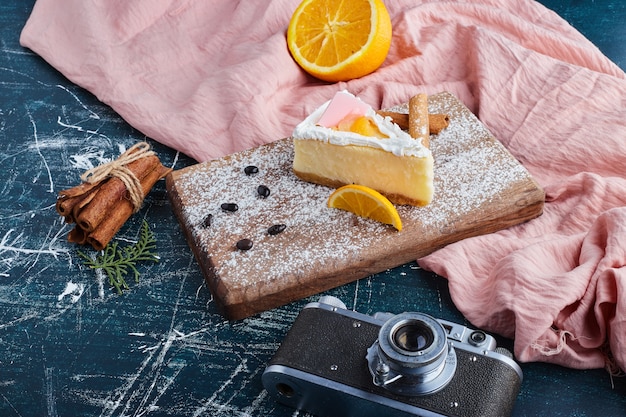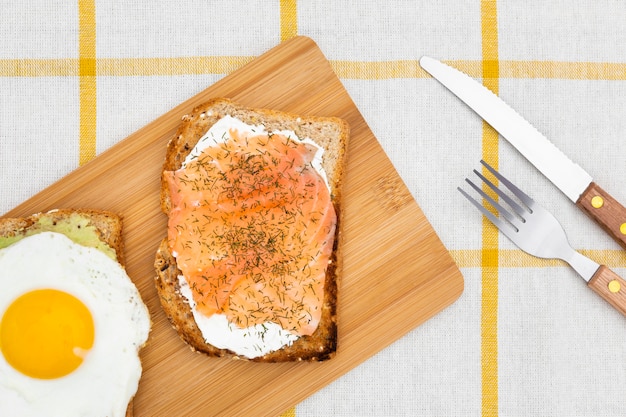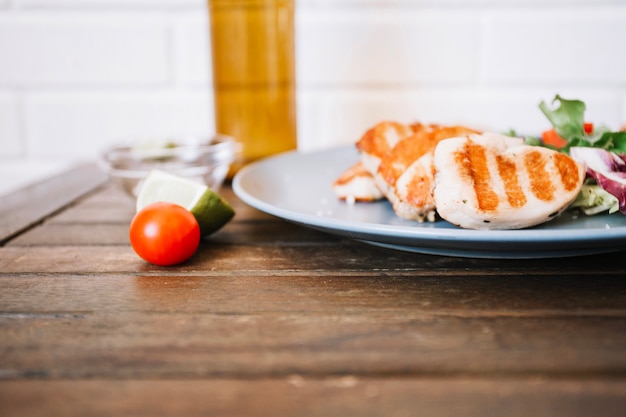Let's talk salmon, shall we? It's a personal favourite – versatile, healthy, and absolutely divine when cooked to perfection. But you know the feeling – that utter disappointment when a perfectly good salmon fillet ends up dry and overcooked. It's a culinary tragedy, really. So, let's embark on a journey into the art of oven-baked salmon and make sure you never have that happen again.
(Part 1) The Basics: Oven Temperature and cooking time

The oven is your best friend for perfectly cooked salmon. It delivers consistent heat, resulting in a beautifully flaky texture, and lets you focus on other things while your fish does its thing. But oven temperature and cooking time are key to achieving those perfect results. Let's break it down.
The Golden Rule: Oven Temperature
A good, consistent heat is crucial for salmon. I always aim for 400°F (200°C). This ensures a relatively fast cooking time and gives you that gorgeous, slightly crispy skin. You can adjust the temperature slightly depending on your preference and the thickness of the fillet, but 400°F is a fantastic starting point.
Cooking Time: A Guide for Perfect Results
Now, this is where things get a bit more specific. Cooking time is all about the thickness of your salmon fillet.
For a 1-inch thick fillet, you’re looking at around 12-15 minutes. For a thicker fillet, say 1.5 inches, you might need to cook for 15-20 minutes.
But remember, the goal is to cook the salmon through without drying it out. So how can you tell if it's ready? The trusty "flake test" is your best friend.
The Flake Test: Your Culinary Compass
Gently use a fork to press on the thickest part of the fillet. If the fish flakes easily, it's ready to go. If it's still a bit tough, give it another minute or two in the oven. Trust your instincts, and don't be afraid to peek!
(Part 2) Getting Started: Prepping Your Salmon

Alright, you've got your beautiful salmon fillet – now what? Time to get prepping! This is where you add your personal touch, creating something truly delicious.
Step 1: Pat it Dry
The first step is to pat your salmon fillet dry with paper towels. This removes excess moisture, preventing steam build-up and allowing for that gorgeous, crispy skin.
Step 2: Seasoning Up Your Salmon
Now for the fun part – seasoning! This is where you really bring out the flavour in your salmon.
My go-to is a simple blend of salt, pepper, and a squeeze of lemon juice. It's a classic for a reason, adding a lovely brightness. But get creative! Try adding herbs like dill, thyme, or rosemary, or spice it up with paprika, garlic powder, or chili flakes. The possibilities are endless!
Step 3: The Skin Decision
Here's where opinions diverge – the skin. Some love it, some hate it. If you're a skin-lover, leave it on! It adds texture and helps keep the salmon moist. If you're not a fan, no worries, simply remove it before seasoning.
If you're leaving the skin on, score it lightly to prevent it from curling up during cooking. This little trick helps ensure even cooking.
(Part 3) The Art of Roasting: Mastering the Technique

With your salmon prepped and ready to go, it's time for the roasting magic!
Step 1: The Baking Sheet
Grab a baking sheet and line it with parchment paper. This is a lifesaver for easy clean-up later on.
Step 2: Laying Down the Salmon
Place your salmon fillet on the baking sheet, skin-side down if you're keeping it on.
Step 3: Into the Oven
Slide the baking sheet into your preheated oven and let the culinary magic unfold!
(Part 4) Beyond the Basics: Elevating Your Salmon
So, you've got the basic roasting technique down pat. Now, let's add some flair, some extra oomph to your salmon masterpiece!
A Touch of Citrus: Lemon, Lime, or Orange
A squeeze of lemon juice is a classic for a reason – it brings a lovely brightness to the salmon and complements the flavours perfectly. But don't be afraid to try lime or orange juice for a different twist. Each citrus adds its own unique touch.
The Power of Herbs: Fresh or Dried
Fresh herbs like dill, parsley, and chives add a fragrant, fresh flavour that's simply irresistible. Dried herbs like thyme, rosemary, and oregano can also be used, but remember to use them sparingly as they tend to be more potent.
Spice It Up: Adding Some Heat
Want to add a little heat? Try a pinch of paprika, chili flakes, or cayenne pepper. Just be careful – a little goes a long way! A touch of spice can really bring out the flavours.
Sweet and Savory: A Honey Glaze
For a touch of sweetness and a gorgeous glaze, brush your salmon with a honey-based mixture. You can add soy sauce, ginger, or garlic for an extra flavour kick. This glaze is perfect for adding a touch of sophistication.
Creamy Goodness: A Butter and Herb Blend
If you're looking for a luxurious and indulgent flavour, try melting some butter and adding chopped herbs like parsley, dill, and chives. Spoon this mixture over the salmon for a flavour explosion. This is perfect for a special occasion.
(Part 5) Beyond Salmon: Oven-Baked Fish Delights
Once you've mastered salmon, there's a whole world of other delicious oven-baked fish to explore. Let's expand your culinary horizons.
Cod: Versatile and Mild
Cod is a great all-rounder – it's mild in flavour and works well with a variety of seasonings. Try baking it with a lemon and herb marinade, or try a Mediterranean-inspired blend of olive oil, garlic, oregano, and lemon juice.
Haddock: A Creamy Delight
Haddock has a slightly sweeter taste than cod, making it a great choice for creamy sauces. Try baking it with a white wine and cream sauce, or top it with a creamy dill sauce for a classic flavour combination.
Sea Bass: Elegant and Delicate
Sea bass is a luxurious fish with a delicate flavour. It's best cooked with simple seasonings – try a sprinkle of salt, pepper, and lemon zest, or a touch of olive oil and fresh herbs.
Tuna: A Firm and Flavorful Choice
Tuna is a firm, flavourful fish that holds up well to oven baking. Try baking it with a Mediterranean-inspired marinade of olive oil, lemon juice, garlic, and herbs. You can also try a Japanese-inspired marinade with soy sauce, mirin, and ginger.
(Part 6) Serving Up Your Salmon: Perfect side dishes
So, you've got your perfectly cooked salmon – now what? Time to choose some delicious side dishes that complement the flavours beautifully.
Green and Gorgeous: Roasted Vegetables
Roasted vegetables are a classic accompaniment for salmon. Try roasting asparagus, broccoli, Brussels sprouts, or carrots for a vibrant and healthy side dish. You can even toss the vegetables in a bit of olive oil, salt, pepper, and herbs before roasting.
Starchy Delights: Potatoes and Rice
For a more substantial side dish, try roasted potatoes or a simple bed of rice. For a twist, try adding herbs, garlic, or even a touch of paprika to the potatoes.
A Fresh Twist: Salads
A light and refreshing salad is a great way to balance out the richness of the salmon. Try a simple green salad with a lemon vinaigrette, or a more adventurous salad with quinoa, chickpeas, and roasted vegetables.
Warm and Creamy: Risotto
Risotto is a creamy, comforting dish that pairs perfectly with salmon. Try a classic mushroom risotto, or get creative with a saffron or pumpkin risotto.
(Part 7) FAQs: Your Salmon-Baking Questions Answered
Okay, so you've got the basic recipe down, but you still have some questions? No worries – I've got you covered!
1. What if my salmon is too thick?
If you have a thick salmon fillet, you’ll need to adjust the cooking time. It’s better to err on the side of undercooking than overcooking, so start with a shorter cooking time and check for doneness with the flake test. You can always add a few more minutes if needed.
2. Can I bake salmon in foil?
Yes, you can definitely bake salmon in foil. This helps to create a moist and tender fish. Simply place your salmon fillet on a piece of foil, season it, and then fold the foil over to create a sealed packet. Bake for 12-15 minutes, or until the salmon is cooked through.
3. Can I add a sauce to my salmon while it’s baking?
It’s best to avoid adding sauces to your salmon while it’s baking. The sauce will likely burn or become too thick. Instead, add your sauce after the salmon is cooked, or brush it on in the last few minutes of cooking.
4. Can I freeze salmon before baking?
Yes, you can freeze salmon before baking, but it’s best to thaw it completely before cooking. frozen salmon can take longer to cook, so be sure to adjust the cooking time accordingly.
5. What should I do if my salmon is overcooked?
overcooked salmon can be a bit dry, but there are a few things you can do to salvage it. First, try adding a bit of sauce or a squeeze of lemon juice. You can also try flaking the salmon and using it in a salad or other dish. Just don’t despair – there’s still plenty of deliciousness to be had!
(Part 8) The Final Word: Embracing the Journey
So, you've got the basics, you've got the tips, you've got the FAQs. Now, it's time to get cooking! There's nothing more satisfying than creating a delicious meal from scratch, and oven-baked salmon is a fantastic place to start. So, get out there, experiment, and embrace the journey.
And remember, the key to success is to have fun and enjoy the process! Happy baking, everyone!
Everyone is watching

Perfect Rice Every Time: The Ultimate Guide to Cooking Rice
Cooking TipsAs a self-proclaimed foodie, I've always been a bit obsessed with rice. It's the foundation of countless cuisi...

The Ultimate Guide to Cooking Asparagus: Tips, Techniques, and Recipes
Cooking TipsAsparagus. The mere mention of this spring delicacy conjures up images of vibrant green spears, crisp and burs...

Ultimate Guide to Cooking the Perfect Thanksgiving Turkey
Cooking TipsThanksgiving. Just the word conjures up images of overflowing tables laden with delicious food, the scent of r...

Prime Rib Roast Cooking Time Chart: Per Pound Guide
Cooking TipsPrime rib roast. Just the name conjures images of lavish dinners, crackling fires, and hearty laughter. It’s ...

Can You Cook Spaghetti with Gasoline? (The Shocking Truth)
Cooking TipsWe've all seen those crazy internet trends. You know, the ones that make you wonder, "Did someone actually try...
